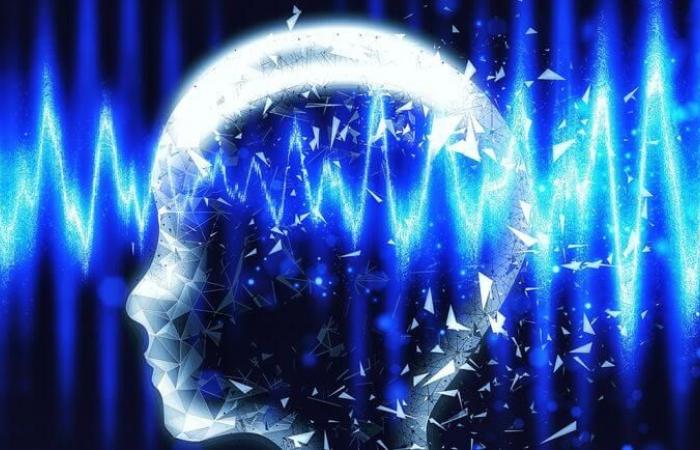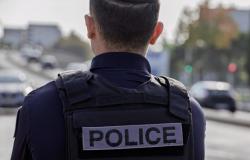Résumé
The diagnosis of epilepsy in children is based on the occurrence of at least two convulsive attacks spaced at least 24 hours apart, at least one without fever, most often associated with electroencephalogram abnormalities.
Diagnostic confirmation, characterization of the type of epilepsy and treatment are provided by a pediatric neurologist or a doctor trained in epileptology.
In the event of a first crisis, particularly if it is a crisis with motor manifestations, the child is generally referred to the emergency room (except for simple “breaks of contact” of short duration after the age of 2, for example absence epilepsy).
Any suspected or proven epilepsy, with the exception of simple febrile convulsions, must be the subject of a consultation with a neurologist and an electroencephalogram, ideally within 15 days, according to the recommendations of the High Authority for Health.
The management of childhood epilepsy benefits from progress in the knowledge of pathophysiology (inflammatory and genetic etiologies), imaging and an expansion of the range of available medications.
The attending physician plays an important role during the first episode, to describe as finely as possible the semiology of the crisis and during follow-up, in particular to ensure compliance with lifestyle rules and preventive measures.
The VIDAL Reco on childhood epilepsy has just been updated to take these advances into account. Dr Dorothée Ville, pediatric neurologist who contributed to this new version, details here the important points of diagnosis and treatment.
AA chronic neurological condition characterized by the occurrence of recurrent seizures, epilepsy affects 0.5 to 1% of the general population and begins in half of cases before the age of 10.
VIDAL. How to analyze an epileptic seizure?
Dr Dorothée Ville. The course of an epileptic attack follows a temporo-spatial propagation (propagation from an initial region to another region, generalization). The analysis of this entire development is essential to understanding the crisis.
The finest possible description of semiology seizures is an essential element of the epileptological approach to classify epilepsy, adjust the etiological and therapeutic approach as well as the prognostic discourse.
The role of the doctor is to translate into medical vocabulary the data from the parental questioning, often imbued with a strong emotional component (“my child is falling”, “his eyes are moving”, “he is starting up”, ” he is absent”, “I thought he was going to die”).
The use of “home videos” is increasingly commonly associated with this semiological analysis.
What are the different types of seizures?
The types of seizures are well defined, based on electro-clinical semiology, according to the classification of the International Epilepsy League [1]. She distinguishes:
- focal seizureswhen the onset of the seizure is located in a localized region of the brain: there may be unilateral or asymmetric motor manifestations (tonic, clonic, atonic), hypermotor manifestations, automatisms, but also non-motor manifestations (neuro manifestations -vegetative, cessation of activities, sensory, somatopsychic manifestations); these seizures can occur with or without alteration of consciousness;
- generalized crises when the onset of the crisis immediately involves all the structures of the brain: generalized motor manifestations (clonic, tonic, tonic-clonic, atonic, myoclonic) and non-motor manifestations in the case of absences.
Whether focal or generalized may be impossible to confirm.
Spasms represent a separate type of crisis depending on the case, it may be of focal origin, generalized, or unclassifiable.
The classification of the crisis is based, in the vast majority of cases, on the initial signs of the crisis which are extremely important to spot.
Should the child be systematically sent to the emergency room?
It is necessary to distinguish the situation of a first seizure from that of a seizure occurring during the follow-up of known epilepsy.
When to seek neurological advice? Via which circuits?
Any epilepsy suspected or proven, apart from simple febrile convulsions which do not require any assessment or specialized monitoring, must be subject to a consultation with a neurologist and an electroencephalogram. The High Authority for Health (HAS) recommends a consultation within 15 days [2]. In practice, the time limit and circuits vary depending on the clinical situation and local resources (liberal/hospital, dedicated “first crisis” consultations).
What are the recent developments in terms of support?
Childhood epilepsy includes heterogeneous pathologiesdescribed in VIDAL Reco, the approach to which is currently in full evolution.
Among the most notable advances in recent years:
- First of all, access to a wider range of antiepileptic drugsmaking it possible to expand the treatment possibilities. However, the impact of these therapeutic advances on the percentage of drug-resistant epilepsies is moderate, since it has remained the same for thirty years (30% of epilepsies).
- And other notable progress in imaging techniqueswhich allowed significant progress in the discussions of pre-surgical assessment. Any child who presents with drug-resistant monofocal epilepsy (defined by the failure of two well-conducted treatments) must be referred to an expert service to discuss the initiation of the first stages of this pre-surgical assessment.
- Third path of evolution: that of knowledge of epilepsy linked to an inflammatory, autoimmune pathologywhich makes it possible, alongside antiepileptic treatment, to offer targeted immunomodulatory treatments.
- Finally, in the field of genetics, the identification of monogenic variants in epileptic and early developmental encephalopathies of the first months of life, has transformed the management of these epilepsies. Their research is now part of the front-line examinations in this indication. Furthermore, numerous research projects are underway to offer targeted therapies in the future, in particular gene therapies.
So, etiology takes more and more place in the exploration of epilepsy and is now integrated into the classification settings.
What is the role of the attending physician in follow-up?
Faced with the complexity of epilepsy care, the general practitioner may feel overwhelmed, even though he has his place in the care pathway for a child with epilepsy.
Even if it is exceptional for the general practitioner to initiate treatment or change molecules, he participates in monitoring the treatment of epilepsy while ensuring l’observancehas tolerancehas efficiency of treatment, to respect for health and diet rules (cf. infra) and to the existence neuropediatric follow-up; he can do the connection with pediatric neurologist when needed.
He is attentive to the occurrence and management of comorbidities possible (psychiatric, cognitive, digestive, respiratory, orthopedic in the event of a multiple disability) and ensures the provision of psychosocial assistance (psychological consequences, social measures such as the departmental house file for disabled people [MDPH]support for the impact on the professional activity of parents, etc.).
Next to the training in crisis management and recourse processingthe attending physician plays an important role in reminding people of the health and diet rules and ensuring they are respected: sleep duration satisfactory, recommendations for screens ; abstinence from consumptionalcohol and of toxic among adolescents. It also ensures that a academic and social integration and the practice of authorized sportswhile avoiding risky situations (swimming alone, climbing, motorized activities, etc.).
Based on an interview with Dr Dorothée Ville, neuropediatrician, deputy head of the pediatric neurology department, Women-Mother-Child Hospital (HFME), civil hospices of Lyon.






